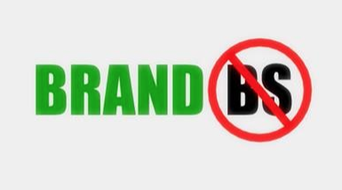 DOCTORS ARE LICENSED TO PRACTICE So are lawyers. And financial planners. Massage therapists and nail technicians need a license. Yet those of us who practice marketing? Since we don't touch a person's body or money, we are free to do as we please. We can just hang out a shingle that says, "Expert marketing advice, $50,000!" And we can take the money and run in circles yelling, "La! La! La! La!" and batting at our hair like it's on fire, and nobody's going to do anything about it. There's no board of ethics that's going to bring us up on charges. SHOULD THAT CHANGE? And what makes me ask such an impertinent question about such an oppressive and invasive process as licensing and oversight? Nothing new. Just a bunch of Great Big Marketing Experts out there in the ether, asserting their expert opinions about the folly of branding. Like, claiming you can't monetize it. You can't take brand awareness to the bank. Branding is a waste of time and money. Nobody can prove a correlation between branding and ROI. NOBODY CAN PROVE THAT A NUCLEAR WAR WOULD RESULT IN A NUCLEAR WINTER, EITHER That doesn't mean that the experts doubt it would happen. And who's really willing to find out if it's true? Not me. I also don't have my finger on any of the red buttons around the world, so it seems moot. But circling back, here's the problem with the anti-brand contingent. They're almost always direct marketers. AND THEY CAN "PROVE" THAT BRANDING DOESN'T WORK Which is utter BS. And we haven't even defined what the hell branding really is. What they're saying is, "I'm in direct marketing and I can prove the return on investment of each effort that I initiate. Therefore, branding doesn't work." This is not in any way a correlation. That's a little like saying, "I drive a car to work, therefore mass transit work." Except that it's easy to prove mass transit does work. (Unless we're talking about Mumbai or Atlanta. Then, all bets are off) THE LACK OF A CORRELATION BETWEEN BRANDING AND ROI IS NONSENSE There are plenty of successful brands that prove it. Want a case of a micro-brand that works? It can be as small as Slow Burn's solopreneur client who re-branded his struggling business. In one year, he doubled his annual revenue--with no paid advertising. Or it can be a case as big as Trader Joe's--a discount gourmet grocery chain that is growing like crazy. Trader Joe's presently generates annual revenue of more than $9 billion--with virtually no advertising. And certainly, there is no direct response advertising. You think Trader Joe's can take its brand awareness to the bank? Of course not. THERE'S NO WAY TO PUT BRAND AWARENESS ON A BALANCE SHEET. That doesn't mean you can't recognize a correlation between everything mandated by the brand direction--which is distinctive, resonant and inarguable. One doesn't grow a single grocery store into a chain of almost 500 locations with over 10,000 employees without advertising unless there's something else at work. Hello, brand. And here's the irony. Every King of Direct Marketing who pees all over the idea of brand is completely dismissing what is one of the most powerful weapons in the marketing arsenal. GOOD DIRECT MARKETING IS EVEN MORE POTENT WHEN GOOD BRANDING IS INVOLVED I am a direct marketer. I know what it means to live or die by response to an advertisement. Most proponents of smart branding embrace DR. Conversely, no DR expert who's bashing brand can say they understand what it means to build a brand in any meaningful way. At Slow Burn Marketing, we have seen branding literally change the lives of small-business owners. From the struggling solopreneur who doubled his annual revenue, to the local hair salon that has increased revenue 300% in five years, to the event contractor who re-branded and subsequently landed a quarter-million-dollar raise out of a single meeting--all of these are examples where the branding made a difference. WHAT ABOUT YOU? What's your experience with brand? As a small-business owner, do you have a story about the potency of brand in your life? As a small-business marketer, do you have a story about the power of brand in a client's marketing? As a consumer, do you have a story about how good branding influenced you in a remarkable way? If you have a noteworthy tale, I want to know. All the unmitigated, non-scientific crap out there bashing brand has become tiresome. "My direct response advertising works so branding is a failure!" You're invited to join me in an effort to lay waste to the BS. If DR experts can make nonscientific, anecdotally-supported claims about how branding doesn't work, we can make nonscientific, anecdotally-supported claims about how branding does work. AND YOU WILL BE FAMOUS! Only if you want to, that is. I will happily use your name and the name of your brand here in the screed. Or, if anonymity is better for you and/or the brand, we can do it that way. But send your anecdote. Whether you're speaking as a marketer, as a business owner, or as a consumer--how has a strong brand made a difference? Either reply to this email, or (if you're reading online) send a message to [email protected] How has brand mattered in your life? Send your story today. We'll make the the Anti-Brand DR BS hit the fan tomorrow.
0 Comments
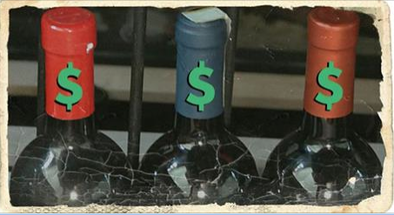 WHAT'S THAT LITTLE CARD REALLY SAYING ABOUT YOUR BRAND? Do you like to buy wine but know very little about it? If so, there's a good chance you appreciate the shelf talker. That's the little card attached to the shelf by the wine. It usually gives the wine a rating number and offers some descriptive words--often modifiers blurted out by a writer at a wine magazine. Buy wine with a good shelf talker, and you can easily pretend you know what the hell you're talking about. You can take those generic words and own them. "I'm so glad you like this wine! That aroma of ripe black fruits blended with mocha and spices really makes you swoon, doesn't it? And combined with the vibrant flavors of blackberry and currants, it dances on your palate. Since it presents a smooth body and a sweet and persistent finish, it goes really nicely with this Swanson Salisbury Steak you're serving. I'm sure it will pair equally well with any of those hard cheeses you buy in a shaker bottle, or any pastas, especially the store-brand cans you buy off the shelf next to the Chef Boyardee." SELL ME A WINE, MR. SHELF TALKER! We're here because of a recent article from The Wall Street Journal by Lettie Teague, one of the paper's wine columnists. I don't typically seek out the WSJ's wine columns. I'm too busy. I let them come to me. When the email arrives, if the headline is intriguing, I'll bite. And as a marketing guy, it's tough to avoid the temptation to combine business with pleasure--making the headline, "Decoding Shelf Talkers: A Wine Buyer's Guide" a definite win. Slow Burn Marketing does, after all, work with the first-ever winery in Park City, Utah. (Sidebar: be aware of the resurgence of urban wineries. Like microbreweries, they were very big before prohibition and are coming back around to haunt us.) Lettie Teague's insight into the value of the shelf talker was entertaining, at least. And she pulled some perspectives on shelf talkers from the people who sell wine. LO AND BEHOLD, THERE WAS SOME ARROGANCE AFOOT! Imagine that. In talking to wine merchants about the value of shelf talkers, Ms. Teague spoke with the president of a highly respected New York City wine shop. He "disdains their use altogether. 'We have a well-trained staff. There's no reason for shelf-talkers.'" Once again, a business owner decides that the one way he likes things is the one way all his customers will like it. Granted, his business does have its fans. A search of Yelp (not a scientific sampling, of course) reveals a slew of 4- and 5-star reviews. BUT IF YOU LOOK AT THE FEW LOUSY REVIEWS, THEY ARE TELLING "I suppose it could be me, but every time I've been in this place it's a horror show. They rarely have what I'm looking for and the staff is way overbearing... Condescending, intrusive, and snobbish are other words that come to mind. " One, less-challenging review (three stars instead of just one) says, "Been here twice and both times felt uncomfortable." Again, this is a highly respected shop. It is run by highly-engaged salespeople. (See also: wine geeks.) People who are geeks at what they sell often do two things: 1) they help give a business its brand reputation; 2) they make some people feel uncomfortable. What they often don't do is take into account how others think and feel. When I walk into a wine shop, I'm usually on my way somewhere. I don't have a lot of time. And I don't always want to get into an involved conversation with a merchant. SOMETIMES, I JUST WANT TO GET IN, GET OUT, AND GET MOVING And shelf talkers help make that possible. We don't all process information the same way. I'm a writer and a reader. I'm an introvert. My decision-making process doesn't necessarily mesh with the desires of a company president who disdains shelf talkers. And being disdainful of a tool that certain customers like and want to use is shortsighted and problematic. Callback to an earlier screed: the local branch of a national bank that refuses to put a calendar on the wall. Reason: they want interaction between the teller and the customer. That's idiotic. Inconveniencing the customer because you think it's good for business is bad for business. MR. DISDAIN-FOR-SHELF-TALKERS IS HALFWAY THERE One cannot fill out a deposit slip at the bank without a date. But one can still buy wine without a shelf talker. However, Mr. Disdain is making it more challenging for a segment of the population. He's forcing everyone to think and feel the way he likes to think and feel--regardless of whether it's what the customer likes. (Yes, "think and feel." Remember, the decision-making process is intrinsically an emotional process.) And you know what? That way of doing business might be just fine. THAT CAN BE PART OF HIS BRAND It's a small business. It's in an excellent location. It already has lots of fans. Maybe he doesn't care about losing a certain percentage of potentially loyal customers. Maybe he doesn't care that he's forcing customers to a) wait for an available staff member or b) leave. Maybe he makes enough money and that's OK. He doesn't care about the percentage that he's losing simply because he disdains a sales card with information about the product. He doesn't care about guys like me who, with the right shelf talker, could eventually become evangelists for his brand. Because yes, there is more than one way to create a shelf talker. GOODBYE, CANNED COPY--HELLO, PERSONAL RECOMMENDATIONS! One of the shelf-talker examples offered by Ms. Teague is a store where they're written by the staff members. Instead of the generic patter about a wine's ripe black fruits blended with mocha and spices which will pair well with a can of sardines & egg from Little Friskies, staff members provide their own evaluations. The in-house shelf talker features the name and a picture of the staff member who wrote it. For example, one card read, "The best $10 Cab I've ever had! Super!" It seems that sales of the wine went up immediately. They "went from selling one case a month to three cases a week." That's a 12-fold increase in sales of a $10 bottle of wine. So, on that one product, they were originally grossing only $120 a month. After the shelf talker, they were grossing over $1400 a month. BLIND GUESS: THAT REPRESENTS ABOUT $600 A MONTH NET PROFIT One little card on the shelf with an enthusiastic review by a staffer sells hundreds of dollars' worth of wine. Maybe the disdainful president in Manhattan doesn't want that additional cash flow. He doesn't want to sell more $10 bottles of wine. He wants to sell more $40 bottles of wine. So what. Put a damn staff-recommendation shelf talker on the $40 bottle of wine you want to sell. Somebody comes in, pressed for time, rushing to a dinner party, knows he wants to buy a decent pinot noir (not one of those dreadful, $10 pinots that have become a scourge ever since the movie Sideways cast that particular varietal as a metaphor for hot sex), and he races to the pinot noir section. There's a wall of pinots in his price range. But one has the words of a "well-trained" staffer who is otherwise preoccupied with another customer. THAT SHELF-CARD ENDORSEMENT IS GOOD ENOUGH FOR MR. HOT-SEX-IN-A-BOTTLE BUYER He snaps it up, races to the register, and is out the door. And Mr. Disdainful-Of-Shelf-Talkers President has 40 bucks in his pocket he might otherwise have lost. What if that happened three times a day with an average sale of $30? That's over $32,000 a year that was previously being left on the sidewalk out in front of the store. Not everyone has the time or the inclination to stand around and talk about wine. Granted, standing around and talking about wine is probably how you double or even triple a sale and build a repeat customer. But until that customer in a rush has the luxury of that time, why not meet him where he is? Because once you do that, you make his life easier and better. Which might lead to that longer, more profitable conversation. Isn't that better than a review that says, "Condescending, intrusive, and snobbish"? (Because that's always so much fun for everyone.) 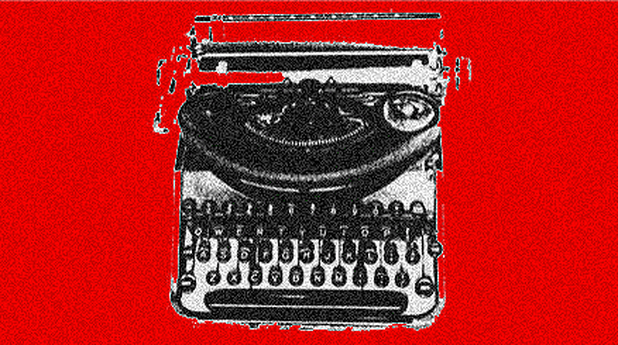 I DID NOT WRITE THIS The following two paragraphs, that is. Rather, they are the words of a man much smarter than I. You may know of him. You've read his words. You've heard his voice. You've seen his films. He is an iconoclast. A dissident. A heretic. Some consider him intolerant and boorish, possibly even irresponsible. It doesn't matter. What matters is that his words will force you to think, they may be polarizing, and they may even make you hate what you do for a living. Ready? Here it comes... WE ARE NOT SALESMEN, WE ARE CRAFTSMEN... ...of what may be the most powerful art form on earth. Art is (this is the shortest definition I know) something that reinterprets for people the life that they're leading. Art allows you to re-experience what you know about life. We crave art because we are unable to fully enjoy or understand what happens to us while it's happening because we're in the middle of it. But advertising is everywhere. Also, because advertising deals with the minutiae of everyday life, any art that comes out of it is going to be particularly relevant and powerful. Part of the reason painting doesn't have much power over our lives today is because the subjects have become esoteric. I can look at a Rauschenberg and say, "Well, that's interesting, and I do get a feeling from it, but I'm not sure how it relates to me." But with advertising, you know what it's about--it may be about something that affected you that very day. I AM COGNIZANT THAT MORE PEOPLE CONSIDER ADS TO BE GARBAGE THAN ART. But I believe that a case could be made that no other art engages people around the world as deeply as advertising does. If you consider how little of what's inside us is actually touched by politics and compare that to how much of our day-to-day actions are informed by the new attitudes, different style choices, and exposure to other people's thinking we glean from advertising, I believe it would not be silliness to say that advertising may have more to do with the German citizens bringing down the Berlin Wall than any diplomats did. SO, WHADDA YA THINK? Yes, this is your relentless scribe again. Is that iconoclastic and bordering on pretentious? It comes from a man whose name you may or may not know. Mark Fenske is an advertising copywriter, college professor, director, VO performer and all around pain in the ass (at least by the barometers if certain advertising professionals). It's possible Mr. Fenske revels in all that. His rant is part of a longer screed that appeared in Viewpoint magazine--no publication date indicated. Regardless of the date, the interview speaks to ambitions and pretensions that could make one dislike Mr. Fenske intensely. WHICH IS A GOOD THING People with a punk attitude are periodically necessary for the rest of us to give ourselves a reality check. One of the reasons I went looking for this magazine interview is that The Fabulous Honey Parker and I spent time with family last week. Honey's niece, who is now in college and possesses the ambition to be a poet, is at the point in life where she eschews commercial art as somehow impure and unclean. She is uninterested in marketing, as it is apparently "Not creative enough." (She is also probably uninterested in paying her bills, a mindset that will eventually turn her supertanker of antipathy for commercial pursuit on something resembling a dime.) I understand this mindset to some degree. Honey does not, as she apparently knew in the womb that she wanted to be an advertising art director. (She later became a copywriter because the hours are better.) But all this to say, I do not begrudge the young woman her artistic pretension. But the idea that marketing "is not creative enough" is an interesting challenge to Fenske's allegation that advertising "may be the most powerful art form on earth." NO, NONE OF US CREATING ADVERTISING WILL END UP IN THE LOUVRE But when we do our job at its best, we will touch people. We will indeed help them to better put their lives in perspective and effect change. Yes, commerce will be at the core of the effort. But how much historically great art was created on behalf of a commercial relationship with a patron--often a church? Yes, this will sound sacrilegious to a number of my devout readers--but understand that I'm not talking about your church. I'm talking about long-ago churches that commissioned artists of the time to create masterpieces depicting the divine nature of the relationship between God and everybody. (And just incidentally, the way of thinking about that relationship was much different pre-Renaissance than it is today.) Great art was arguably a sales tool to help bring the unsaved into the fold and become supporting members of the church. The word used to describe the relationship between the church and artist is "patronage." That word derives from the Latin patronus, meaning one who gives benefits to his clients. Hmm. Clients. WERE THE MOTIVES PURE AND THE INSPIRATION DIVINE? I leave that up to you, dear reader. Probably depends on your particular church. But it's hard to argue that the art was not intended, on some level, as a persuasive tool. A promise of something better than mere earthly existence. Art has long been a vehicle of persuasion. And to fast forward to 20th century history, the idea that the Berlin Wall was brought down in response to free-market western advertising isn't so crazy. Eastern Bloc teens and adults had long coveted the products, fashion and music of the free west. (Back during Glasnost, a friend of mine knew a Russian who was making a killing by loading up shipping containers in the U.S. with second-hand blue jeans and sending them off to the USSR.) Yes, the cynics among us will argue that advertising often represents a crass commercialization of artistic sensibilities in pursuit of filthy lucre. So be it. WATCH A NIKE TV COMMERCIAL AND SAY THAT IT ISN'T ART There is so much extraordinary, evocative art that parades as advertising under the Nike banner. In fact, Mark Fenske has been responsible for some of it. He has both written and directed it. In this space, I've previously told of the crass, written-to-strategy, hard-core direct-response ads for a replacement window company that were always outperformed 4:1 by a spot I'd written--a commercial that went with the mere idea of art and art galleries connected to replacement windows that represented an aesthetic ideal. Recently, in the context of a project Slow Burn is doing for a client connected to the NFL, I was told that a piece of copy I'd written made an important person fall in love with her city all over again. Did I think that what I was writing was art? Not as I was writing it, by any stretch. But, as the man said, "Art allows you to re-experience what you know about life." And I'm glad that someone who knows the city found the words moving--exactly because I wrote the piece hoping to be evocative and to make the reader care and feel good about a truly special and unique place. So, yes: despite my lack of artistic pretense (which is probably a good thing), it may have been art. Possibly even because the effort possessed no pretense whatsoever. LITTLE, EMOTIONALLY EVOCATIVE EFFORTS CAN CRYSTALLIZE REALITY They can make the reader or viewer or listener feel moved. The crystallization of reality is something that art aims to do. Doing it with images is the aim of film and photography and painting. Doing it with lyrics and melody is the aim of music. Doing it with words is the aim of poetry. And if any of these media do it with the aim of persuading you to buy a product or service or a candidate, they are doing so under the banner of advertising. "The mountain sees through you to the small, frightened child within, but it doesn't laugh, it smiles, it holds its 2,003-acre arms wide open, and it says come, I take you as you are." QUESTION: POETRY OR ADVERTISING? ANSWER: YES. It's also from a 1995 print ad for Aspen Snowmass written by Mark Fenske. The copy is set amidst artistic images of jagged, snow-covered peaks and peaceful, snow-drifted aspen groves. It's arguably some of the most engaging and creative ski-resort advertising ever. Certainly more evocative than, "More skiable terrain than any other resort in the country," which is a) a flat-footed bullet point and b) a cold, uninspiring feature without benefit reserved for someone who can't figure out anything more engaging to say about their resort. And yes, in his punditry, I do believe Fenske can move from being an iconoclast to gadfly. We all have our moments. I may be having one now. But Fenske is still an iconoclast and quite possibly a genius. Not to mention one hell of a VO performer. All this to say, heed the man's advice. Regardless of your role, whether you're a business owner or a marketing professional, you are working in one of the most powerful art forms on earth. Don't be afraid to make the most of it instead of the least of it. 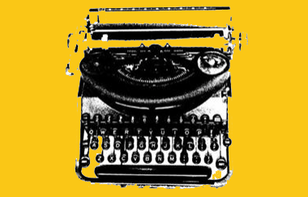 WASN'T EXPECTING THIS... For about 20 years, I've been carrying an imitation leather padfolio to client meetings. It's a dark brown thing that was given to me as a Christmas present. It has my initials printed in "gold leaf" on the lower right-hand corner. (Why quotes around "gold leaf"? It's faux leather. Hard to imagine they went for genuine gold leaf.) This padfolio has served me well as I talk to clients and pretend to write down notes about things they're saying. But, at 20 years old, it's starting to look a little...thrashed. It seemed like time for a replacement. HELLO, STAPLES! Standing there in the padfolio aisle, one can feel a range of emotions ranging from dismay to fear to loathing. It is not an encouraging padfoilo selection--unless you happen to relish the idea of walking around with a textured plastic and rubber folio bearing a giant badge indicating you are carrying a Swiss Army writing pad. (Does it come with a corkscrew? If so, can you get it on a plane in your carry-on?) Or, maybe you desire something vaguely resembling leather that has plenty of zippers and a built in calculator as if you're a salesman or actuary ready to calculate on the go. Or, if you ever considered a padfolio that brands you as tragically underpaid, and feels like it might accessorize well with your best double-knit suit, this is your place. In other words, it all pairs well with the irony of a big-box, limited-selection brand like Staples. Somehow, these huge stores only ever have a modest range of middle-of-the-road items in any category. In other words, Staples is a generalist brand rather than a specialty brand, and it specializes in commodity and parity products. THANKS, STAPLES--THAT WAS EASY Next stop: the interwebs. In searching for padfolios, I stumbled across the website for Leatherology. I'd seen it before, but never really paid a lot of attention. Your relentless scribe isn't heavily invested in leather accessories. Nonetheless, Leatherology is a specialty purveyor of personalized leather accessories. And Leatherology has a padfolio of exactly the kind of simple, understated style that goes with your scribe's no-nonsense, pretend-note-taking demeanor. Several mouse clicks, and a new padfolio was on the way. And this is where the branding fun really begins. HELLO, PLAIN BROWN UPS BOX It seemed like a fairly large box for something that contained an item toughly the shape and size of an engorged legal-pad. I slit the tape and removed the clean, fresh newsprint packing material. Facing me was a sheet of strong, smooth, brown kraft paper. It was folded over, meeting in the center, and sealed with a sticker bearing the Leatherology logo. Really? Peeling away the sticker (for one does not simply tear something so elegant), I was faced with a densely constructed, bronze-colored cardboard box. The box was bound with a deep black ribbon. The elegant, Leatherology logotype was embossed at the foot of the box cover, imprinted in black. The box feels as though it might contain an expensive picture frame or a slim but important photo album. Or maybe it's a box full of life's chocolates in all their Forrest Gump glory. DUDE, ALL I ORDERED WAS A PADFOLIO! Slipping the lid off the box revealed a shiny, bronze-colored microfiber sheet. Again, the Leatherology logotype was printed on the fabric. The fabric felt rich and clingy and sexy and maybe someone somewhere in an adult-oriented garment factory makes this same fabric into sexy lingerie. Lifting aside the flimsy, silken fabric, there it was. The Leatherology padfolio in all its slightly-larger-than-8.5-by-11 glory. Clean. Simple. Fresh. Smells like a new car at a fraction of the price. Removing the padfolio and opening it suddenly felt like it came with tremendous responsibility. Inside was a pad of a serious, gunmetal hue that spoke of important deals to be made. And there, in the lower left corner of the cover, in the business-card pocket, was a black card bearing the white letters: "LEATHEROLOGY." HOW DO YOU THINK THEY WANT YOU TO FEEL ABOUT THIS BRAND? This was an experience on par with unboxing a new iPad. And it made me think about how long it's been since a low-tech product was presented with such an elevated packaging experience. Yes, "experience." Because unboxing this thing is indeed an experience. And it's calculated to make the customer feel a very particular way about the Leatherology product. There's absolutely no reason to keep this packaging--other than it feels wrong to dispose of it. And then it got me to thinking... HOW OFTEN DOES A BUSINESS FAIL TO MAKE IT FEEL LIKE THEIR PRODUCT MATTERS? A leather padfoloio could very easily have been treated like any other business-supply commodity product. That's certainly how it feels inside a Staples store. But with what probably amounts to five dollars' worth of packaging at cost, Leatherology has made it absolutely certain that you will notice and not forget. You will feel like you've become part of a club. And yes, this company obviously has some deep-ish pockets to be pulling this off. It's not cheap to do. It definitely eats into margin. (It also raises the price of the product, contributes to landfill waste, and could be considered excessive use of natural resources--but that's a whole other screed.) That said, it is possible for the small-business owner to make such a sensory impression upon the customer without spending a lot of money. IT IS POSSIBLE TO IMPART DELIGHT AND MAKE THE PROSPECT FEEL SOMETHING ON A BUDGET Witness: the Leatherology kraft-paper wrapper and logo sticker. These are two very inexpensive components that immediately change the experience. They are also affordable for almost any small business. Back in an entirely other age (before anyone was using this thing called email), people still mailed out press kits to the media. I was working with a homemade ice cream business in Miami. The brand had a lot of whimsy and delight baked into its DNA. And in an effort to make an impression on local media outlets, we sent out press kits that were equally aimed at instilling whimsical delight. The copy in the press materials was light and fun. And the press materials were delivered in simple, heavy-stock two-pocket folders that bore a logo sticker on the cover, and had been splattered with bright, ice-cream colored paint. PEOPLE LOVED THEM Granted, we're talking media people as opposed to customers. But the net effect is the same. In a world where everything they see is stiff and corporate or uninteresting and blah or otherwise unremarkable in its commercialness-- These people had been given a brand experience on a simple level and it left them with a sense of delight. How do we know this? Because routinely, in those first weeks of business, the people who had received these folders would come into the business and remark on how much they enjoyed them. They indicated that these folders brought a smile into their day. The experience made them feel really good about the brand. EVERY TOUCHPOINT IS AN OPPORTUNITY TO MAKE THE CUSTOMER FEEL SOMETHING It can be done for big bucks or on the cheap. It doesn't matter, as long as it's smart and appropriate and calculated to feel right. So, what is your business doing to make sure your customer feels the right thing? Does it involve kraft paper and a sticker? Does it involve logo-emblazoned microfiber lingerie fabric? Is there a paint-splattered paper folder that conveys whimsy and delight? Does it involve delivering an organic, all-natural product in a little jute sack, as one of our clients does? Are you making use of every opportunity to make your customer feel something about your brand? What are they touching at your touchpoints? |
AuthorBlaine Parker is prone to ranting about any and all things related to brand. In many ways, he is a professional curmudgeon. While there is no known vaccine for this, the condition is also not contagious. Unless you choose it to be so. Archives
February 2022
Categories
All
|
|
© Copyright 2020 Slow Burn Marketing LLC |
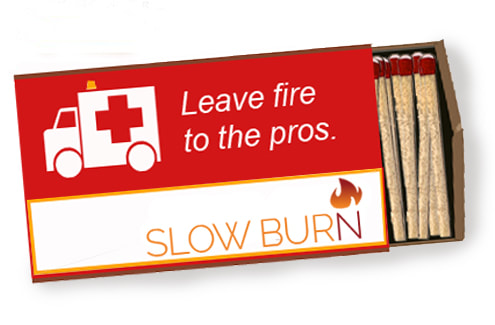
 RSS Feed
RSS Feed

